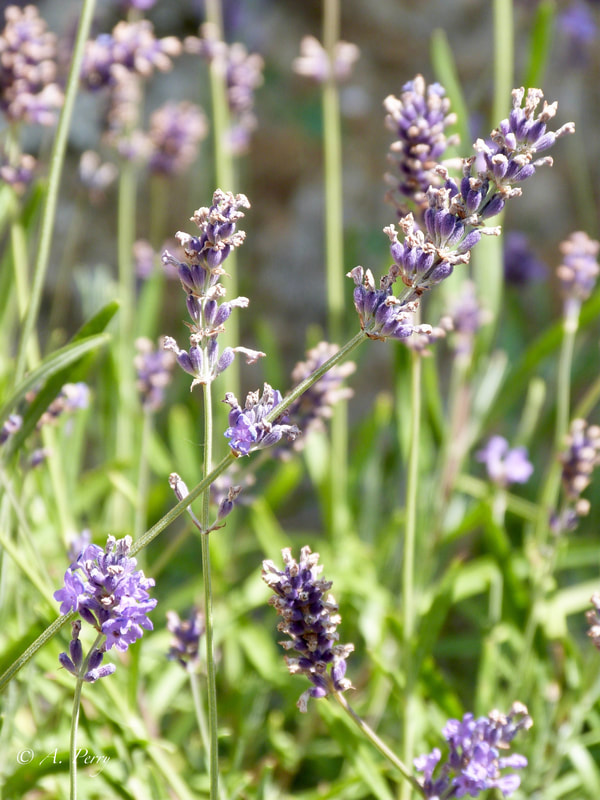Everyone that I have ever met loves lavender. It is not only a beautiful plant, but also a very useful one in the arena of natural medicine. It can be used in tinctures and teas and also externally as a massage oil.
In Latin it is known as Lavendula officinalis and in Ayurveda it is called Dharu. The scented flowers are the part of the plant that is used medicinally.
Ayurvedically, the quality or Guna of lavender is sharp, penetrating, oily and light. It has a pungent taste or Rasa. It’s potency or Virya is a cooling one. The post digestive effect or Vipak is pungent.
These attributes mean that it is a cooling and calming herb that can assist in nervous problems such as anger, insomnia, irritability and low self esteem. It can help relieve headaches. It calms nausea and is anti-inflammatory and antiseptic, so is very useful in cases of infection.
I often combine a tincture of lavender in equal parts with a tincture of Calendula officials to cleanse and dress wounds, as such it makes a perfect post surgical antiseptic.
Orally ingested it can treat asthma, colds, coughs and catarrhal congestion. Whatever your constitution, it can benefit you. It is an antioxidant and can reduce free radicals. It also has proved effective against parasites such as those causing the tropical disease Leishmaniasis caused by sandfly bites.
One of it’s constituents is a pentacyclic terpenoid called Amyrine. This is a strong anti-viral agent and has also been shown to have an important cytotoxic effects during experimental research conducted on tumours (David Bramwell 2004).
In Latin it is known as Lavendula officinalis and in Ayurveda it is called Dharu. The scented flowers are the part of the plant that is used medicinally.
Ayurvedically, the quality or Guna of lavender is sharp, penetrating, oily and light. It has a pungent taste or Rasa. It’s potency or Virya is a cooling one. The post digestive effect or Vipak is pungent.
These attributes mean that it is a cooling and calming herb that can assist in nervous problems such as anger, insomnia, irritability and low self esteem. It can help relieve headaches. It calms nausea and is anti-inflammatory and antiseptic, so is very useful in cases of infection.
I often combine a tincture of lavender in equal parts with a tincture of Calendula officials to cleanse and dress wounds, as such it makes a perfect post surgical antiseptic.
Orally ingested it can treat asthma, colds, coughs and catarrhal congestion. Whatever your constitution, it can benefit you. It is an antioxidant and can reduce free radicals. It also has proved effective against parasites such as those causing the tropical disease Leishmaniasis caused by sandfly bites.
One of it’s constituents is a pentacyclic terpenoid called Amyrine. This is a strong anti-viral agent and has also been shown to have an important cytotoxic effects during experimental research conducted on tumours (David Bramwell 2004).
|
|
|

 RSS Feed
RSS Feed
